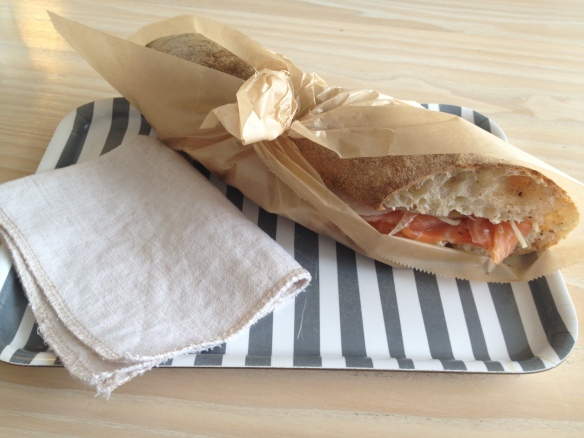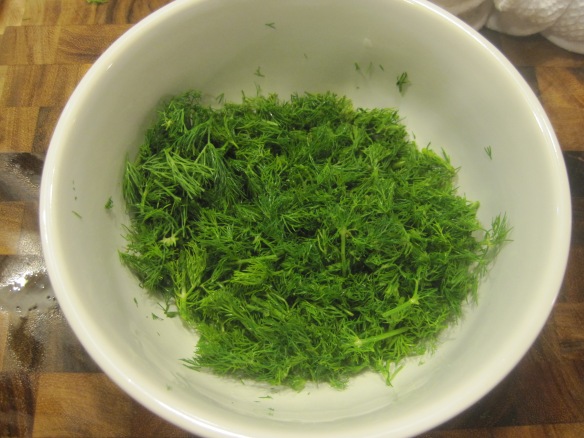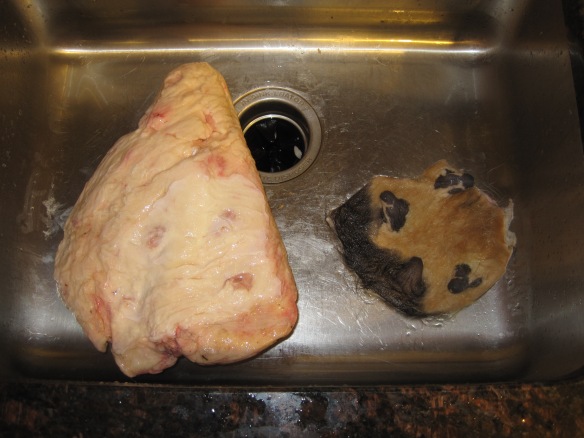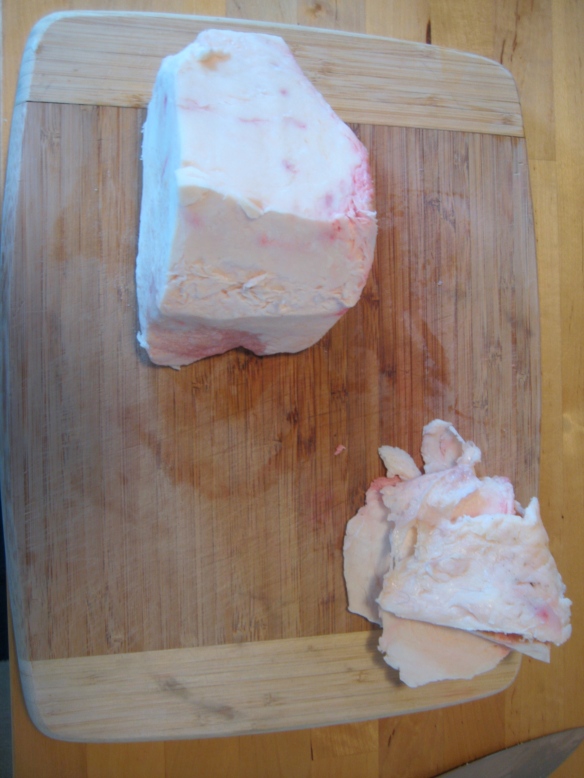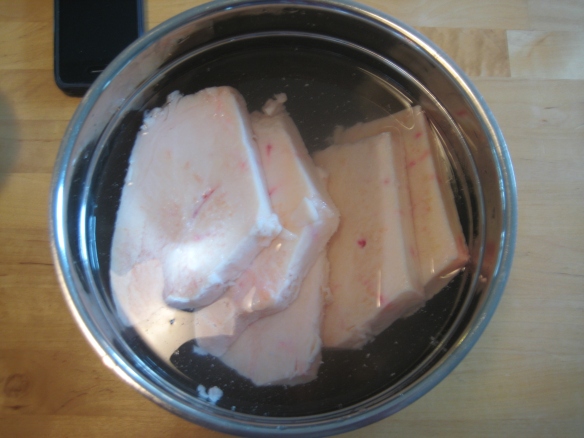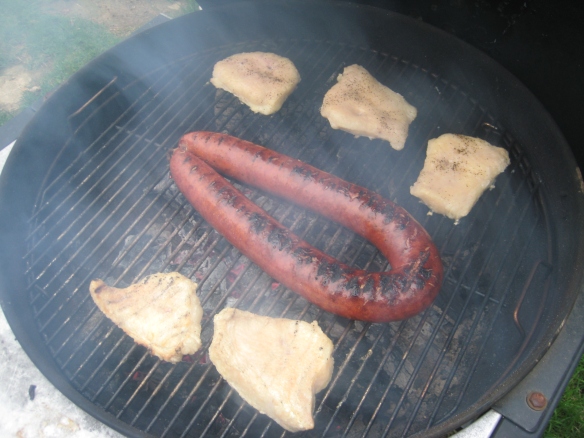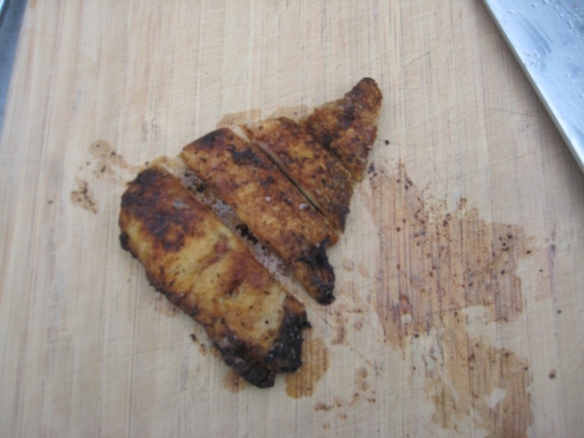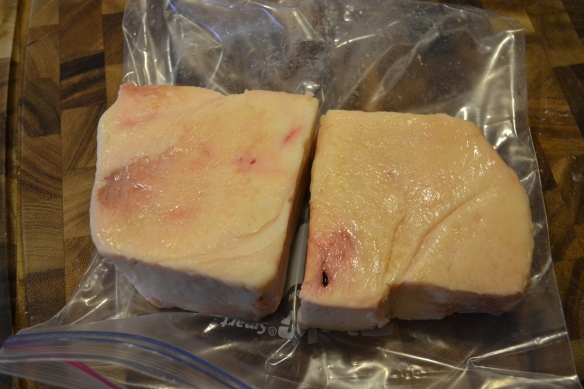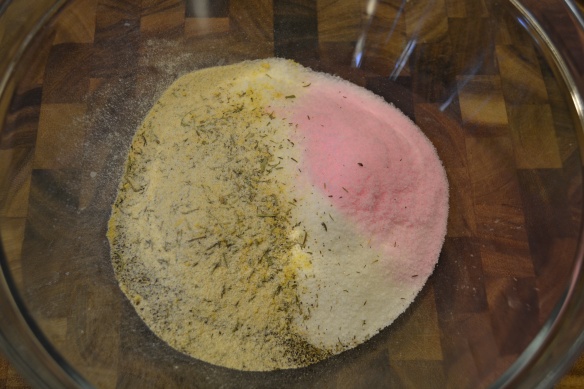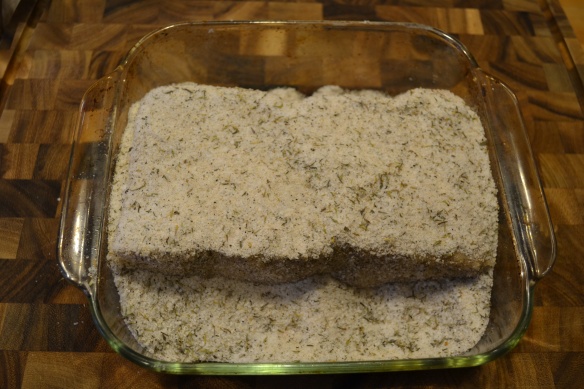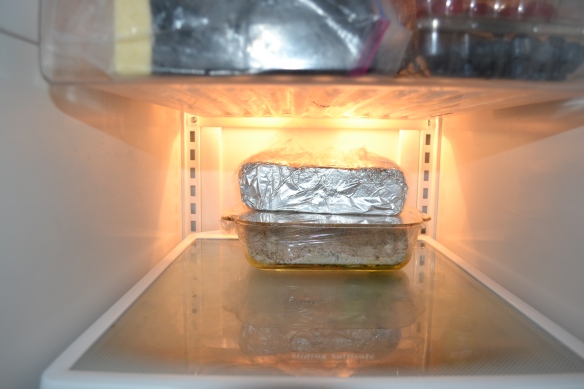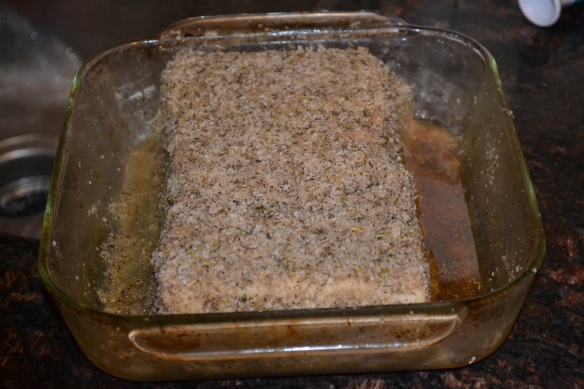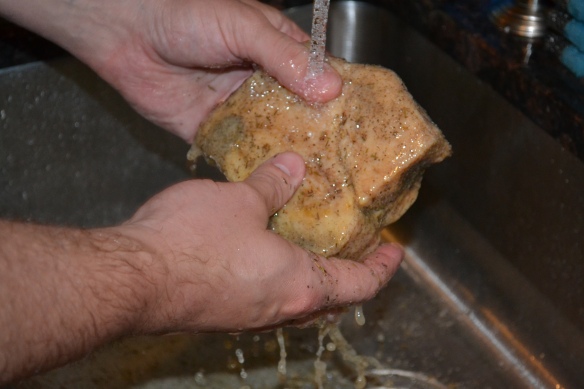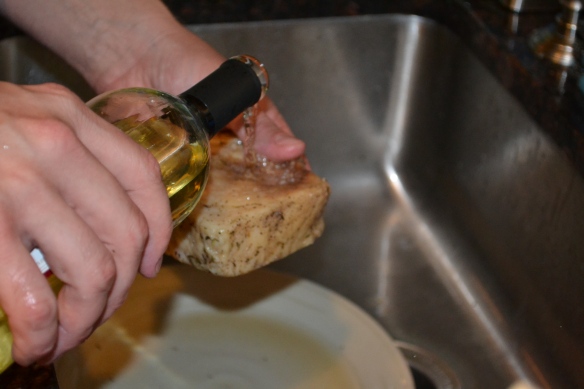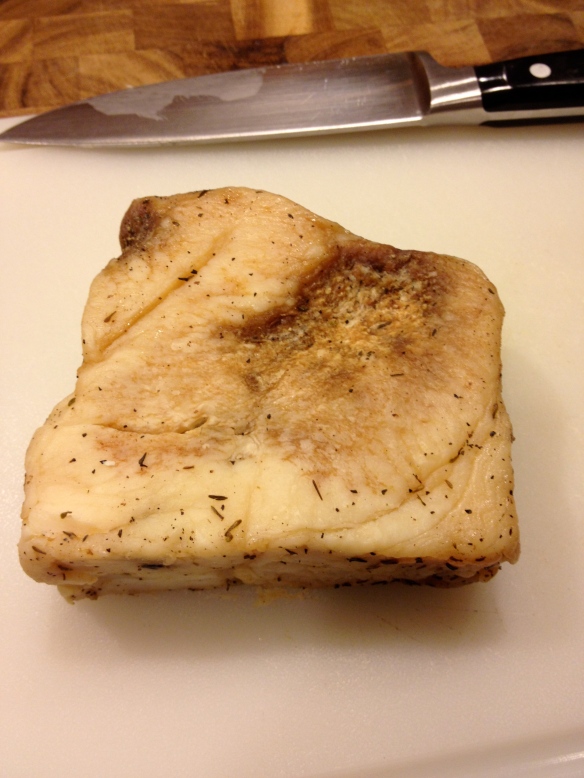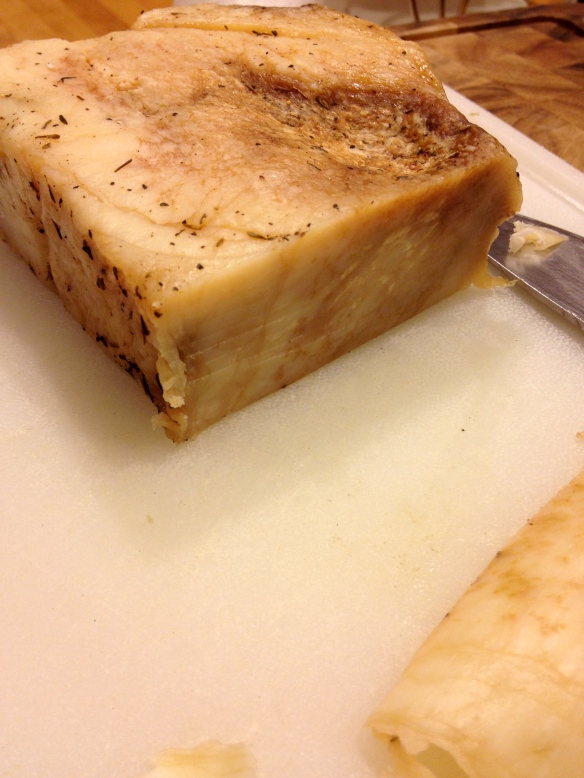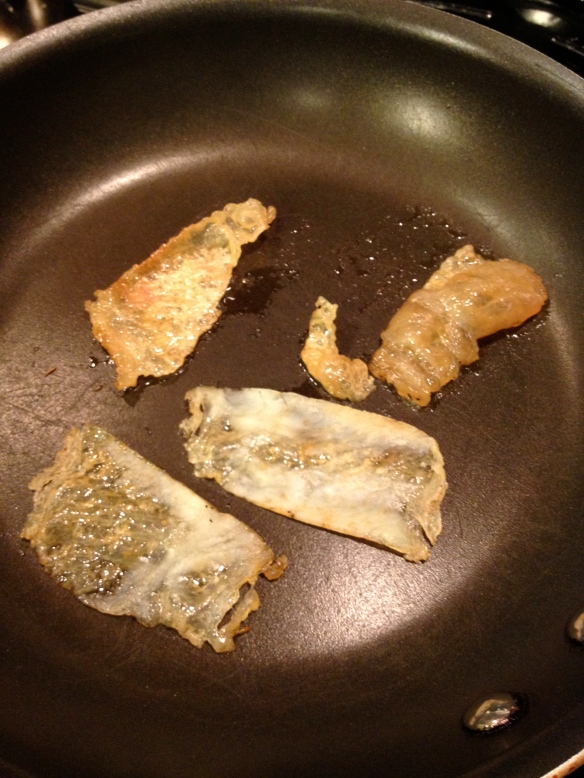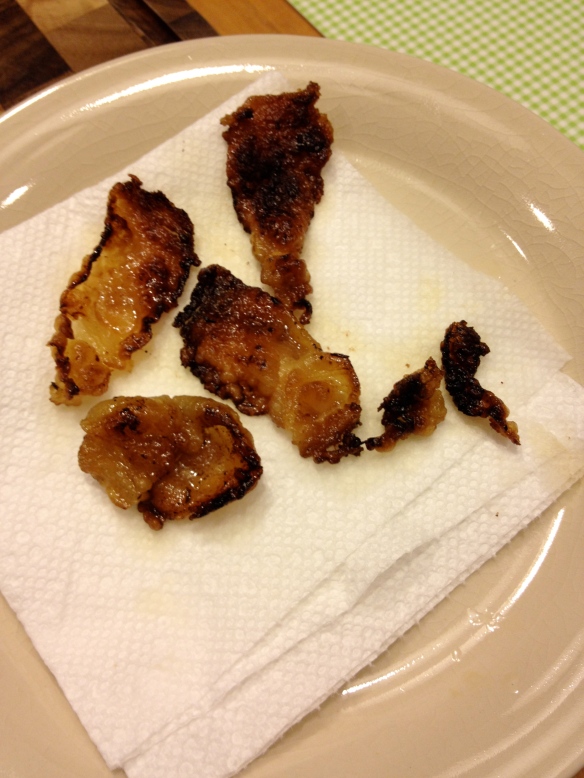Live from the Acela Boston to NYC route comes this installment of ADB, er, The Pete Is On! I know I am continuing to struggle with regular posting but I have the meals documented to be doing more gooder. The issue is mostly just getting old and not having the energy to write these things from 9-12 on a weeknight like I used to. Plus a slight uptick in work travel lately. My concern with this one is that the power outlet doesn’t work at my seat and my computer is on its’ last legs for both battery and memory.
A few weeks ago I posted about the hogs head cooked at blog character Dupee’s bachelor party on Webb Lake in Maine. I also mentioned that some (read: parts) of the fish caught on the trip came home with me, though nothing that Kristi was excited to eat. Not much logic behind that last point, since multiple whole fish were up for grabs when I left on Sunday, but I felt bad keeping them since I had no perceptible connection to the act of catching them.
A brown trout that was caught late in the day was one of the largest trout I had seen since they were few and far between at the places I’d fished most of my life; Ravine Lake and the Ausable River. Whipping out the buck knife I carry with me on masculine weekends to offset my fear of bugs, snakes, and loud noises, I volunteered to clean this fish. Upon opening the brownie, I was surprised by how large and pronounced all of the organs were, particularly the liver, roe sacks and the heart.

I can actually claim negative responsibility for this one since it was caught while trawling shortly after I loudly mocked the idea of trawling for trout. In the process of cleaning it, I decided to eat the still wriggling heart raw which was questionable, show-offy, disgusting and any other adjective that can be used to describe this blog as a whole
Quick sidenote on fish roe. In my Fish Cakes and Spaghetti blog I discussed how I was introduced to caviar at a young age and have had a lifelong obsession with it. As a kid my caviar obsession used to manifest itself by saving the roe sacks from trout in Michigan to be fried in bacon grease at the morning fish fry. Cooked fish roe is mealy, dry, and not that pleasant to eat, but that never seemed to deter me. More recently I’ve had a lot of trouble tracking down fish roe and yearn for the Italian Market in Philly where you can buy an anonymous mixed bag of roe sacks for a couple bucks. But, I digress.
It hadn’t been in my original plans for the weekend, but one of the reasons I’d been looking for fish roe recently was to make bottarga, a salt cured version of fish roe. Bottarga is one of those mystical Italian items that shows up in the ingredient listing for pastas in fine restaurants. Most eaters don’t recognize and wouldn’t dare appear unknowledgable enough to ask about. I’m not judgin’ since I am consistently guilty of this and am fully comfortable BSing when Kristi or others ask me to define and ingredient I am barely familiar with. Let’s just think of bottarga as magical Italian pixie dust.
Taking a fish roe sack and curing it in salt at room temperature for a week or so is what yields bottagra, a dried, crumbly, and very salty stick of funky fish flavor. The two large roe sacks joined a smaller pair in a heavy coating of salt on a couple plates in the house.

I think the pinkish color of these is so nice and should be appetizing to more people. Just like the New Jersey Turnpike is a horrifying representation of the state, the Acela really is not kind to traveler’s impressions of New England. I think I’ve passed four prisons and the back parking lots of seven strip clubs. That said, the high speed rail will give you a 1000x better impression of New England than the pit of humanity that is Logan Airport. That place makes the accents in the Dish Hopper ads seem understated
My plan was to go the full bottarga route with the larger two roe sacks. This would require keeping them fully covered in salt for seven days, rotating them and drying any excess moisture regularly. It also required making sure none of my fellow bachelor party attendees threw them out by accident. I didn’t help my cause on that front by pulling the smaller roe sacks out of the salt cure after a few hours of firming up, rinsed, and offered them around for a taste test.

These look substantially less appetizing than the raw version in my opinion, so I was a little surprised that multiple people were willing to take a bite. Can’t say it increased their faith that the hogs head cooking in the cabin would be edible
At this point in the curing process, the texture of the roe was gummy, fishy, and, obviously very salty. Think of a salty and fishy Swedish fish, complete with the sticking to the teeth factor that allowed you to savor the flavor for up to an hour afterwards. It wasn’t a treat for others but I enjoyed it much more than I should have and ate most of it.
The next morning the larger roe sacks were still leaching water and needed to be re-covered with salt before heading back to Boston. Back at the homestead, I covered them with another layer of salt, placed on a paper towel, and moved to a cabinet above the sink in the kitchen. The following 6-7 days were not smooth sailing because those roe sacks got a little stinky and it would sneak up on you while you were doing dishes. That’s right folks, I discovered a scientific anomaly; fish organs left at room temperature for a week get a little smelly. These were smellier than I expected, though, and I researched about once a day whether this was a bad thing and if I should throw them out. I never found the answer, but assumed it was no.
After a little over a week, I had this:

Rock solid and stinky, but finally able to go inside a zip lock bag in the fridge where they would be less offensive. I expected them to be more rock solid than the crumbly, bumpy sticks I had in front of me
When refrigerated, the bottarga will keep for up to a year, so I had some time to figure out what to do with it. I’m sure bottarga has lots of uses, but I really only had one in mind which was pasta. Apparently it is excellent in simple pasta dishes since it give the musty seafood flavor you get from anchovies but in a much more controllable distributed manner.
The opportunity to make said pasta came about a week later with a stay at brother Tim’s house in NJ and Mommy Ryan in attendance as well. There was a fair amount of questions about what I planned to make, so I decided to make a second pasta as well in case this one turned out, you know, gross. I got started by boiling a pound of fettuccine al dente, reserving the starchy water and shocking the pasta with cold water to stop the cooking. Then grated a piece of the bottarga with a microplane.

I expected the product to be a lot more dry and crumbly, but the texture was like damp breadcrumbs or sawdust. Tim mocked me aggressively for bringing my own microplane, but couldn’t produce a grater when asked if he had anything that could have done the job. Stupid anti-air conditioning and vegetable-garden-ignoring jerkface Tim, I’ll show him
I ended up grating about 3/4 of the smaller bottarga piece, which seemed like it would be a good amount for 1/3 of the pound of cooked pasta. Plus the grated zest of about half a lemon as well.

The guy next to me on the train is catching up on season 2 of Girls on his iPad. Every time a Lena Dunham nude scene comes on (spoiler alert: there are way too many) he does this weird cupping thing with his hands shielding the view of his iPad, almost like he is trying to look into a darkened room through an exterior window. My advice would be to cover the screen with both hands and come back when the daring, soul-baring honesty is over. That is, for 30-45 seconds before the next nude scene
Once the bottarga was grated, I seasoned a couple handfuls of kale along with some halved brown mushrooms and tossed them in oil. The vegetables went onto a baking sheet with a couple Chester Meat Market Italian sausages and into a 450F oven to roast and get some color.
While those cooked, I sautéed garlic in olive oil in the pan for the bottarga pasta, and sautéed some additional chopped kale for the other pasta in a different pan. Once the sausage and veggies finished roasting, they joined the kale pan along with 2/3s of the cooked pasta, a ladle of the starchy pasta water and a couple spoonfuls of Tims crappy pesto.
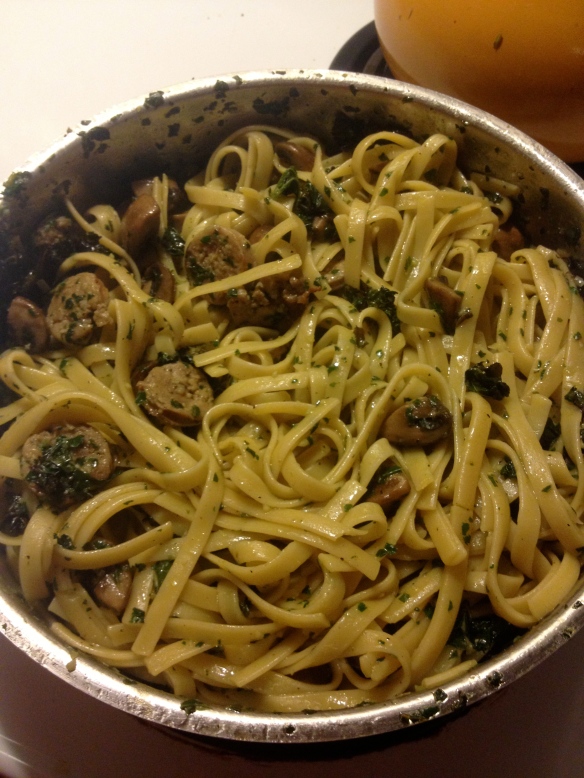
Big surprise, Tim and I almost came to blows over how he makes his pesto. Luckily, he averted disaster by mentioning how Hub Hollow Jill makes her pesto, leading me to considering driving to her home to berate her in person. Balsamic vinegar in a pesto?!?! What the hell is wrong with you, Jill???
In the bottarga pan, I added the remaining pasta and a ladle of the starchy pasta water along with the bottarga, zest, and about a cup of pan roasted corn.

Walkers farm stand in Little Compton consistently has the best corn I have ever had in my life, so I needed to make use of the extra from the night before. Corn and seafood, even very fishy seafood, always go excellently together. The only thing worse than the lighting in Tim’s house is Tim’s house on a 90 degree day
As the liquid cooked down, the sauce coating the pasta took on an almost creamy texture and the smell of the bottarga was noticeable but not that different from a standard shellfish pasta. It also looked pretty innocuous, but appetizing.
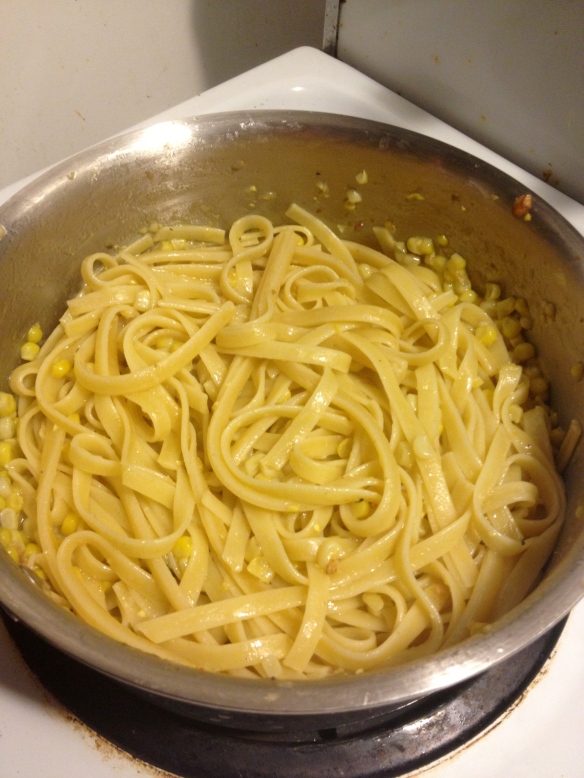
Really been loading up the captions in this post. I was trying to stay traditional which is why I went with olive oil over butter, but would likely make it with butter next time around to make it rich and creamier
And with that, I plated up a little for everyone, though Kristi stuck with just the sausage/mushroom/kale combo. After a bite or two I realized the bottarga pasta would be far better with a little lemon zest grated over the top along with a pinch of salt.

Dueling pasta is a wonderful plate of food in my opinion. I could do four on one plate, I love having different textures and flavors
The sausage, kale, mushroom, and pesto pasta was solid. Lots of flavor, and the texture from the roasted kale added a nice texture and flavor contrast to the rich mushroom and sausage flavors. Can’t go wrong with roasted vegetables, sausage, and pesto in a pasta. The main event for me was the bottarga pasta which, when topped with the extra zest and salt, I found extremely enjoyable. The flavor from the bottarga was definitely fishy, and slightly musty, though not overpowering and mostly noticeable only when you took a deep breath in while eating. It reminded me of dishes I had with dried shrimp in them while I was in China. The sweetness from the corn was a nice addition, as usual. I can’t wait to cook with it again, possibly pushing the fishiness further with some shellfish as well.
Got some Sunday football meals coming up. Promise.

